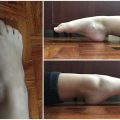Transferring an individual using a gait belt is a technique commonly used in healthcare settings to assist with moving patients or individuals who may have difficulty walking or maintaining their balance. Here’s a step-by-step guide on how to transfer an individual using a gait belt:
Materials You’ll Need:
- A gait belt
- Assistance from another person (if necessary)
Steps:
- Prepare the Individual:
- Explain the procedure to the individual and obtain their consent.
- Make sure the individual is wearing appropriate clothing for the transfer, and that they are wearing non-slip footwear if possible.
- Position the individual’s feet flat on the floor, shoulder-width apart if possible.
- Choose the Right Gait Belt:
- Ensure the gait belt is the appropriate size and properly fastened. The belt should be snug but not overly tight, and it should be positioned around the individual’s waist, just above the hips.
- Position Yourself:
- Stand facing the individual, and if you are right-handed, position the belt on their right side, and vice versa if you are left-handed.
- Your feet should be shoulder-width apart, and your knees should be slightly bent to maintain balance.
- Instruct the Individual:
- Ask the individual to hold onto the gait belt for added support if they are able to do so.
- Provide Support:
- Grasp the gait belt with both hands. One hand should be on the front of the belt, and the other hand on the back.
- Make sure you have a firm grip, keeping your elbows close to your body.
- Transfer the Individual:
- If the individual is sitting, assist them in standing by gently pulling up on the gait belt.
- When ready to move, use your legs and core muscles to lift and pivot the individual. Avoid using your back to lift; this can lead to injury.
- Move slowly and in a controlled manner. Encourage the individual to take small steps as needed.
- Maintain clear communication throughout the transfer. Let the individual know what you are doing and ask them to communicate any discomfort or concerns.
- Complete the Transfer:
- Once the individual is in the desired position, assist them in sitting down or moving to their intended location.
- Gently lower the individual if necessary.
- Remove the Gait Belt:
- Once the transfer is complete, undo the gait belt and ensure the individual is comfortable.
- Store the gait belt properly for future use.
- Document the Transfer:
- In a healthcare setting, it’s essential to document the transfer, including any issues or concerns that arose during the process.
Remember that safety and the individual’s comfort are of utmost importance. If you are unsure about using a gait belt or the individual has specific medical needs, it’s best to consult with a healthcare professional or a physical therapist for guidance and assistance.
Notes:
- If the individual is particularly heavy or has difficulty supporting their own weight, consider using a lift transfer
- The gait belt may also be used to aide walking by positioning yourself slightly to the rear of the individual and holding the belt at the small of the back of the individual as he/she
REFERENCE: Excerpted and adapted from Perry AG, Potter PA: Clinical nursing skills &techniques, ed 7, St. Louis, 2010, Mosby.





